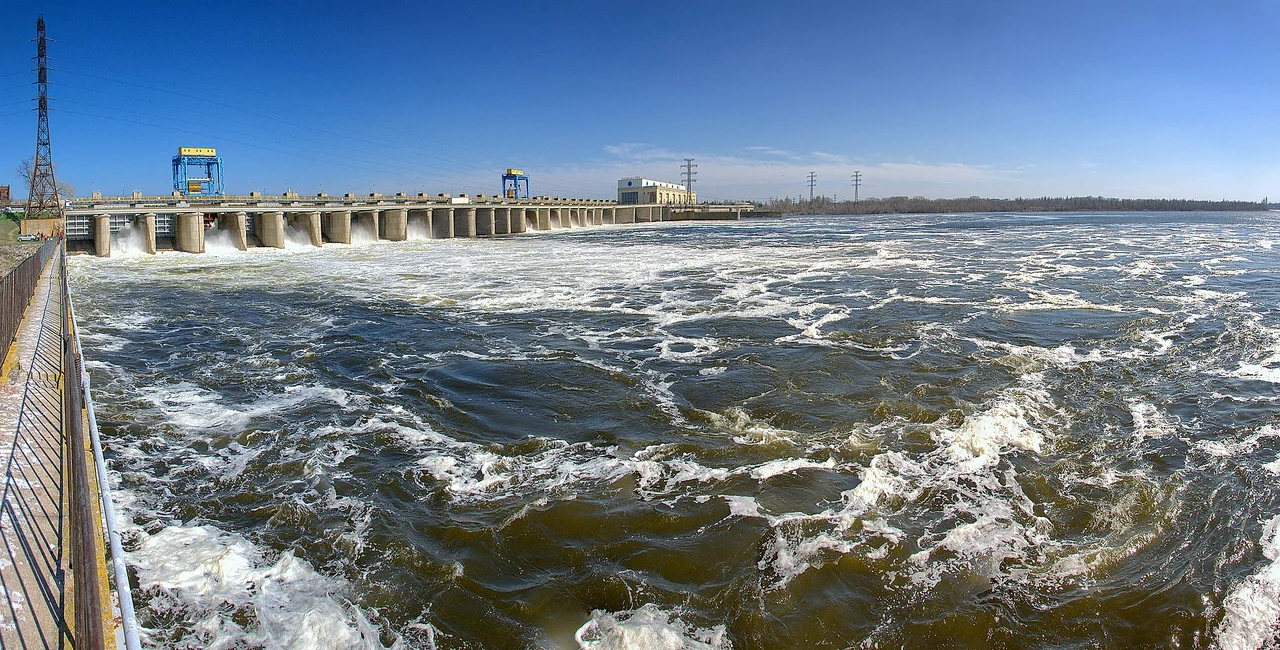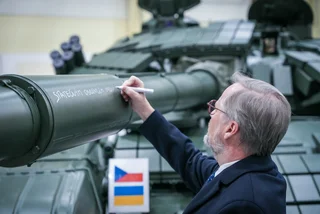Czech and European officials condemned the destruction of the Nova Kakhovka dam in southern Ukraine, and the Czech Foreign Ministry has already allocated emergency funds to help civilians in the area. Nuclear experts, though, say the destruction should not have an immediate impact on the safety of the Zaporizhzhia nuclear power plant, which relies on the dam for cooling water.
Ukrainian and Russian media announced today the destruction of the dam, which they attributed to the other country. The Ukrainian military says the Kakhovka dam, which is in a Russian-occupied part of Ukraine, was blown up by Russian forces. Russian officials have blamed Ukrainian troops.
Ukrainian President Volodymyr Zelenskiy said the destruction of the dam "confirms for the whole world that [Russian forces] must be expelled from every corner of Ukrainian land."
Czech and EU officials condemn the destruction of the dam
Czech Foreign Minister Jan Lipavský said Russia continues to push the limits of its aggression. "The attack on the Nova Kakhovka dam above populated areas is comparable to using a weapon of mass destruction against civilians. This brutality will be condemned and punished!" he tweeted.
He has already approved the allocation of CZK 10 million in emergency aid to help with the evacuation of civilians and the consequences of the destruction of the dam. This was the highest sum the ministry could allocate without government approval.
Czech Prime Minister Petr Fiala also condemned the attack, saying it caused a humanitarian disaster that will affect thousands of innocent people. "Russian aggression in Ukraine is inexcusable, moreover, it causes enormous suffering and tragedies. This needs to be stopped. The only way to peace is our strong help and support to Ukraine," he tweeted.
Chamber of Deputies chairwoman Markéta Pekarová Adamová called Russia a terrorist state. "The destruction of the Kakhovka dam is their latest crime and must also become one of the points of an indictment at a Tribunal for Crimes of Russian Aggression in Ukraine. Humanitarian aid to affected civilians is now a priority," she tweeted.
Financial Reporting & Analysis Specialist

European Council President Charles Michel blamed Russia for the damage, tweeting that he was shocked by the unprecedented attack on the dam: "The destruction of civilian infrastructure clearly qualifies as a war crime – and we will hold Russia and its proxies accountable."
Shocked by the unprecedented attack of the Nova Kakhovka dam.
— Charles Michel (@CharlesMichel) June 6, 2023
The destruction of civilian infrastructure clearly qualifies as a war crime - and we will hold Russia and its proxies accountable.
The dam is 30 meters tall and 3.2 kilometers long. It was built in 1956 on the Dnipro (Dnieper) river as part of the Kakhovka hydroelectric power plant, a separate electrical generation facility from the Zaporizhzhia nuclear power plant. It also supplies water for irrigation systems.
No risk of nuclear catastrophe
The Zaporizhzhia NPP, the largest facility of its kind in Europe, uses water from the dam for cooling. Some international media expressed concern that the destruction of the dam could lead to a catastrophe at the plant. Dana Drábová, the chairwoman of the Czech State Nuclear Safety Authority, said those fears were unfounded.
"The destruction of the Nova Kakhovka dam should not have an immediate effect on the safety of the Zaporizhzhia electric plant. The reactors are shut down, cooling is provided by a large special reservoir on the Dnipro. Worse is the humanitarian disaster due to flooding," she tweeted.
Czech nuclear scientist Radek Škoda told ČTK the destruction of the dam means that the nuclear power plant will be decommissioned for years but there was no danger of a nuclear accident because all six reactors had been shut down since Sept. 11 due to fears of the dam being blown up. Less water is needed for cooling when the plant is not in operation.
Evacuations have begun in the Kherson region of southern Ukraine following the destruction of the dam. Russian-installed officials in the partly occupied region say the evacuation is not yet necessary. According to the Ukrainian side, 16,000 people were in great danger after the dam was destroyed, while the occupation administration put the number at 22,000 people.












 Reading time: 3 minutes
Reading time: 3 minutes 



 Swedish
Swedish
 Finnish
Finnish
 Danish
Danish
 Italian
Italian
 Polish
Polish























